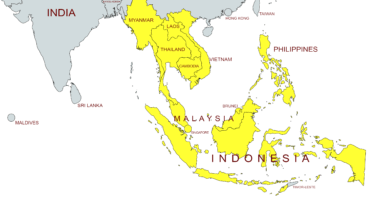Pradhan Mantri Jan Vikas Karyakram (PMJVK)
Context:
The Ministry of Minority Affairs is implementing the Pradhan Mantri Jan Vikas Karyakaram (PMJVK), in the identified Minority Concentration Areas (MCAs) of the country.
About Pradhan Mantri Jan Vikas Karyakram (PMJVK):
- Pradhan Mantri Jan Vikas Karyakram (PMJVK) of the Ministry of Minority Affairs seeks to provide better socio-economic infrastructure facilities to the minority communities particularly in the field of education, health & skill development.
- The erstwhile Multi-sectoral Development Programme (MsDP) has been restructured and renamed as Pradhan Mantri Jan Vikas Karyakram for effective implementation since 2018.
- It is Centrally Sponsored Scheme.
- The State Govt/UTs or Organizations look after the recurring and maintenance expenses.
- Special focus by earmarking funds:
- 80% of resources would be earmarked for projects related to skill development, health and education.
- 33 to 40% would be specifically allocated for women-centric projects.
- The restructured Programme will be implemented as “Pradhan Mantri Jan Vikas Karyakram (PMJVK)” during the remaining period of 14th Finance Commission i.e. upto 2019-20.
- It will be implemented as a Centrally Sponsored Scheme.
- At present 6 (six) communities namely Muslims, Sikhs, Christians, Buddhists, Zoroastrians (Parsis) and Jains have been notified as Minority Communities under Section 2 (c) of the National Commission for Minorities Act, 1992.
- It aims to address development deficits in the identified minority concentration areas.
- The identification of minority concentration areas (at village, block, town and district headquarter level) has been done on the basis of presence of substantial population of notified Minority Communities based on socio-economic, basic amenities and population data of Census 2011.
- The Pradhan Mantri Jan Vikas Karyakram was developed to enhance the basic infrastructure facilities and socio-economic amenities for the minority communities. PMJVK focuses on provisions particularly in the fields of Health, Education and Skill-development. This will assist in lessening the gap between the national average and the minority communities with respect to economical and backwardness parameters. The scheme takes care of the development deficits in the Minority Concentration Areas (MCAs).
Objective of the Scheme/ Programme
- The PMJVK will continue to support the projects sanctioned under erstwhile Multi-sectoral Development Programme (MsDP) for completion of the sanctioned and ongoing projects.
- The PMJVK is implemented to be in Minority Concentration Blocks (MCBs), Minority Concentration Towns (MCTs) and Clusters of Minority Concentration Villages (COVs). However, certain number of population and area coverage have been specified for MCTs and COVs.
- A new area for implementation of PMJVK has been included namely Minority Concentration District Headquarters (MCD Hq).
- The PMJVK has used the selected socio-economic, basic amenities and population data of Census 2011 and have identified MCBs, MCTs and MCD Hqs. COVs will be identified by using the backwardness parameters and population data of Census 2011 in consultation with the State government/UT administration concerned.
- The identified areas namely MCBs, MCTs, MCD Hqs and COVs for implementation of PMJVK will be known as Minority Concentration Areas (MCA).
Beneficiaries of PMJVK
As far as PMJVK is concerned, the communities notified as minority communities under Section 2 (c) of the National Commission for Minorities Act, 1992 would be taken as Minority Communities. At present 6 (six) communities namely Muslims, Sikhs, Christians, Buddhists, Zoroastrians (Parsis) and Jains have been notified as Minority Communities under Section 2 (c) of the National Commission for Minorities Act, 1992.
The Programme aims to address development deficits in the identified minority concentration areas. The identification of minority concentration areas has been done on the basis of presence of substantial population of notified Minority Communities based on Census, 2011. The inclusion of Minority Concentration District Headquarters along with the Minority Concentration Towns having population more than 25,000, Minority Concentration Blocks and Cluster of Villages as per Census, 2011 data, will extend the coverage of population of minority communities.
PARAMETERS FOR IDENTIFICATION OF MINORITY CONCENTRATION AREAS (MCA)
The backwardness parameters are:-
- Religion-specific socio-economic indicators at the district level
- Literacy rate;
- Female literacy rate
- Work participation rate
- Female work participation rate
- Basic amenities indicators at the district level
- Percentage of households with pucca walls
- Percentage of households with safe drinking water
- Percentage of households with electricity
- Percentage of households with latrine facility within the premise
AREA FOR IMPLEMENTATION
- Backward Minority Concentration Blocks (MCBs)
- Backward Minority Concentration Towns (MCTs)
- Backward Minority Concentration Districts Headquarters (MCD Hqrs)
- Backward Clusters of Minority Concentration Villages (CoVs)
Areas identified by data of Census 2011
- Unit area of implementation has been further broadened by including Minority Concentration Districts Headquarters in addition to the minority concentration Blocks, Minority Concentration Towns and cluster of minority concentration villages.
- As compared to MSDP, the PMJVK would now cover five more States/UTs namely Himachal Pradesh, Tamil Nadu, Nagaland, goa and Pondicherry. All States/UTs earlier covered under MsDP have also been included under PMJVK.
- Under PMJVK Minority Concentration Blocks (MCBs) and Minority Concentration Towns (MCTs) falling in 308 district of 32 States have been covered.
- The area covered under PMJVK will have 109 MCD Hqrs., 870 MCBs and 321 MCTs.
Other schemes which aim at the inclusive growth of the minority communities
- Seekho aur Kamao
- Usttad
- Garib Nawaz Kaushal Vikas Yojana
- Nai Manzil
- Nai Roshni
- Begum Hazrat Mahal Girls scholarships
You can find many articles related to SCHEMES (part of GS II) in our website. Go through these articles share with your friends and post your views in comment section.



